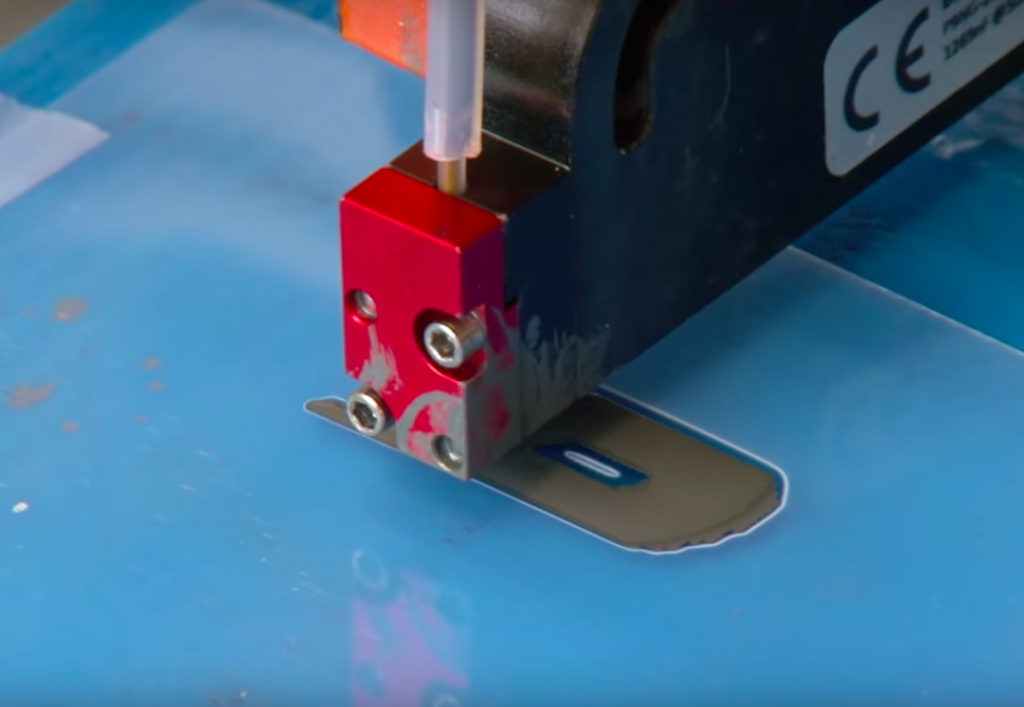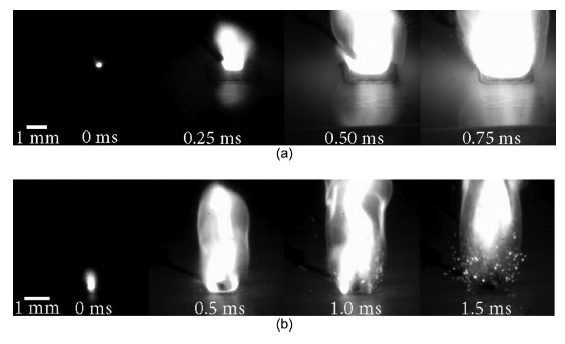Researchers from Purdue University, specializing in energetics, thermodynamics and additive manufacturing, have invented a method of depositing energetic materials like nanothermites using additive manufacturing.
The group of seven researchers brought together energetics and combinatorial inkjet deposition technology to create a piezoelectric 3D printer, which is capable of depositing two substances sequentially on to a bed of substrate.
When combined, the inert materials formed a nanothermite, a substance consisting of nanoparticles that would not release its high energy without a stimulus such as ignition. Samples of the 3D printed nanothermite were then ignited as part of the research, resulting in a series of controlled explosion for analysis.

Depositing the thermite
Purdue PhD student Allison Murray constructed the 3D printer that was capable of depositing the nanothermite materials through extrusion. Murray’s 3D printer has a stationary nozzle, while the build platform below it moves to form whatever shape is required.
Functioning in a manner similar to a domestic inkjet printer (and some bio-printers), the 3D printer consists of a tube surrounded by material which flexes when a voltage is put through it. This flexing motion squeezes the tube, producing picoliter droplets. The droplet size could be varied by as little as 0.1 microns through varying the voltage.
The printer deposited two different inert colloidal suspension inks on to the Novele substrate. These two inks were a fuel consisting of nano-aluminium (nAl), and an oxidizer, nano-copper (II) oxide (nCuO). Since the inks were deposited in a sequence, they overlapped and mixed on the substrate producing a nanothermite.
Alternate singly and dually extruded 10×10 pixel square bitmap ink samples were prepared using single and dual nozzles. The dual nozzles deposited the fuel and the oxidizer separately, while the single nozzle deposited both together. Samples of 3, 5, and 7 layers in thickness were printed.

Testing the deposited thermite samples and experimental results
Each of the nanothermite samples was ignited electrically and analyzed using high-speed thermal imaging and scanning transmission electron microscopy (STEM). “It burns at 2,500 Kelvin [over 4,000 degrees Fahrenheit],” Murray said. “It generates a lot of thrust, a lot of heat, and makes a nice loud shockwave!”
Experimental data achieved by igniting the samples showed a 200K difference between the maximum reaction temperature of the dual and single samples respectively. Samples with 5 and 7 layers had overlapping bounds of peak reaction temperature.
With little difference in print quality, this suggests greater comparable safety for the dual nozzle sample than a premixed nanothermite solution, since the fuel and the oxidizer are stored separately. Overall, it produces multilayered structures, with tailorable characteristic thicknesses and different reaction rates that are achieved by modifying the inkjet printing rates.

3D printing meets energetics
“What’s unique about this project is the intersection of those two fields,” noted Murray, “and being able to safely deposit energetic materials with this level of precision.”
“It’s a defining feature of Purdue that professors from such different backgrounds can work together on a project like this,” added Murray’s supervisor Prof. Jeffrey Rhoads. “We can combine all of our experiences to collaborate on technologies that weren’t previously realizable.”
The results of this experiment will now be used in micro-mechanical energetics systems. Future research will now look at techniques for the bulk characterization of the samples, and study the effect of deposition’s shape on the overall energetic performance of the material.
A paper detailing the research, “Two-component additive manufacturing of nanothermite structures via reactive inkjet printing” by Allison K. Murray, Tugba Isik, Volkan Ortalan, I. Emre Gunduz, Steven F. Son, George T-C Chiu, and Jeffrey F. Rhoads is available online.
Nominations for the second annual 3D Printing Industry Awards are now open. Make your selections now.
For more information on energetics research and 3D printing, subscribe to our free 3D Printing Industry newsletter, follow us on Twitter, and like us on Facebook.
Featured image shows infra-red slow motion imaging of the deposited energetic substance ignition. Gif via Purdue University.

